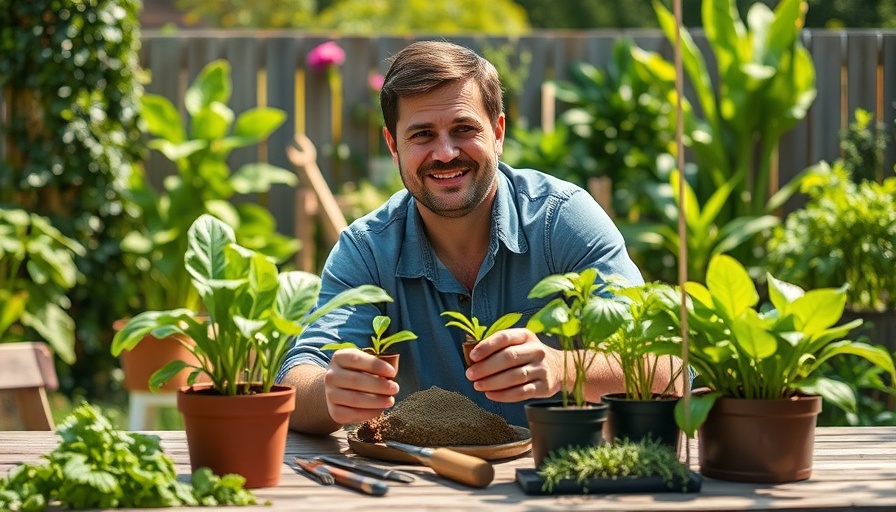
Become a Gardening Pro with Easy Plant Propagation
When it comes to creating a beautiful garden, propagation is a magical process that allows you to multiply your plants with minimal effort. One of the easiest plants to propagate is the agave, and as the video Easy Propagation Tips For a Gorgeous Garden demonstrates, it can almost do the work for you! For instance, the Agave attenuata is known for its ability to grow roots along the stem, making it easy to take cuttings. Simply use a pruning saw to cut through the stem, or twist off the smaller 'pups' at the base for new plant beginnings.
In Easy Propagation Tips For a Gorgeous Garden, the discussion dives into effective techniques for propagating plants, exploring key insights that sparked deeper analysis on our end.
The Joy of Planting More Than Just Flowers
Propagation can create not only beautiful borders but also provide you with fresh, homegrown produce. While planting flowers can brighten your garden, consider taking it a step further by growing your own vegetable garden. The agapanthus is another resilient option for your landscape. Known for its hardiness, these plants do well in pots or as part of a flower bed when separated and transplanted appropriately.
Embrace Sustainable Gardening Practices
One significant takeaway from our video discussion is the importance of fostering a sustainable garden, especially in today's climate. This involves adopting practices such as composting, which can drastically reduce kitchen waste and improve soil health. Utilizing a compost tumbler not only speeds up decomposition but also provides essential nutrients for your plants. What’s even better? It helps lower your carbon footprint while providing you with rich compost for your plantings.
Planning Your Irrigation System Wisely
The video also highlights smart watering strategies like installing an irrigation system that conserves water, especially during droughts. Smart controllers that utilize Wi-Fi not only monitor weather conditions but also ensure that your garden maintains optimal hydration without wasting resources. This is key for any sustainable gardening effort, particularly when growing your vegetable patch.
Maximizing Your Garden's Potential with Companion Planting
Companion planting is a technique that enhances the health and vitality of your plants. As suggested in the video, marigolds are an excellent companion to your vegetable plants, deterring harmful pests like aphids while attracting beneficial insects. Moreover, ensuring that you have an array of plants that attract pollinators can significantly enhance your garden's productivity.
The Importance of Mulching for Soil Health
Mulching is another important aspect of garden care. It acts as a protective layer that helps retain soil moisture, suppresses weeds, and adds nutrients back into the ground as it breaks down. Choosing the right type of mulch, whether eucalyptus or sugar cane, can make all the difference in maintaining a healthy environment for your plants.
Growing Your Own Food: The Benefits
With the rise in awareness about food waste, growing your own food can be both rewarding and sustainable. Choosing leafy greens and herbs allows you to pick fresh produce as needed, minimizing spoilage and enhancing your meals with vibrant flavor. Herbs thrive in pots, making them easy to manage and move around your garden to optimize sunshine exposure.
In conclusion, garden enthusiasts can transform their outdoor spaces with simple yet effective practices. With techniques like propagation, planting combinations, composting, and proper irrigation, individuals can cultivate both beauty and bounty in their gardens while embracing sustainability. So, take a leaf out of this video and start planning your journey towards a gorgeous and eco-friendly garden today!
 Add Row
Add Row  Add
Add 




Write A Comment